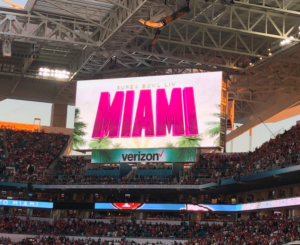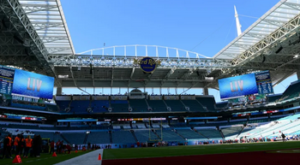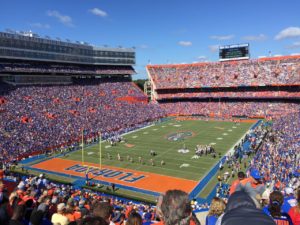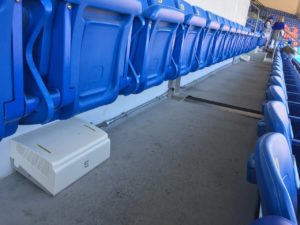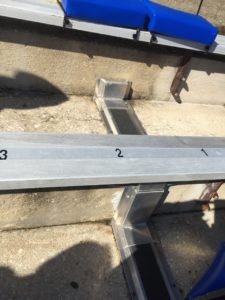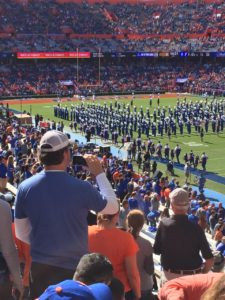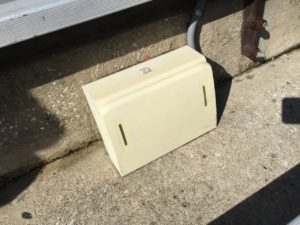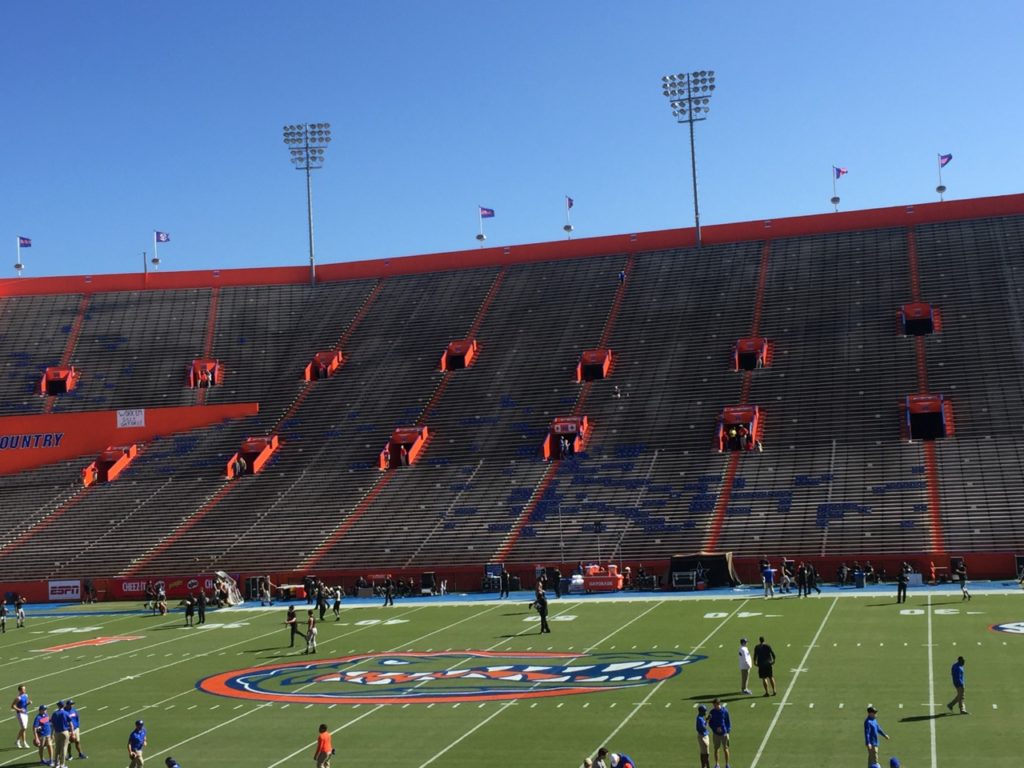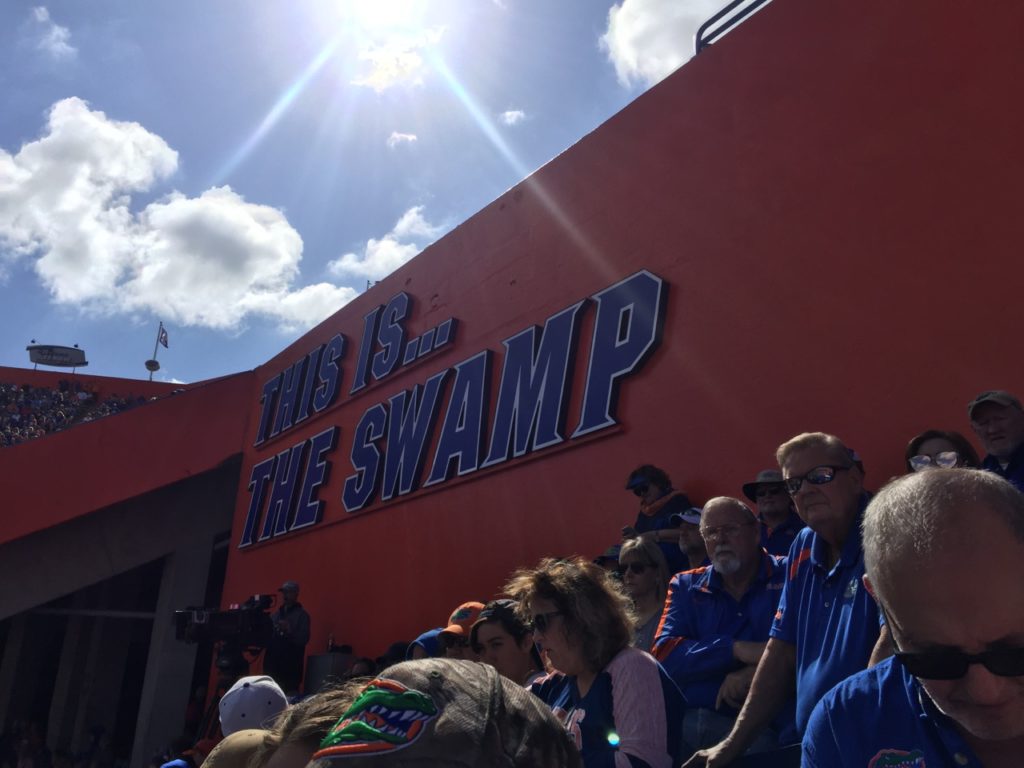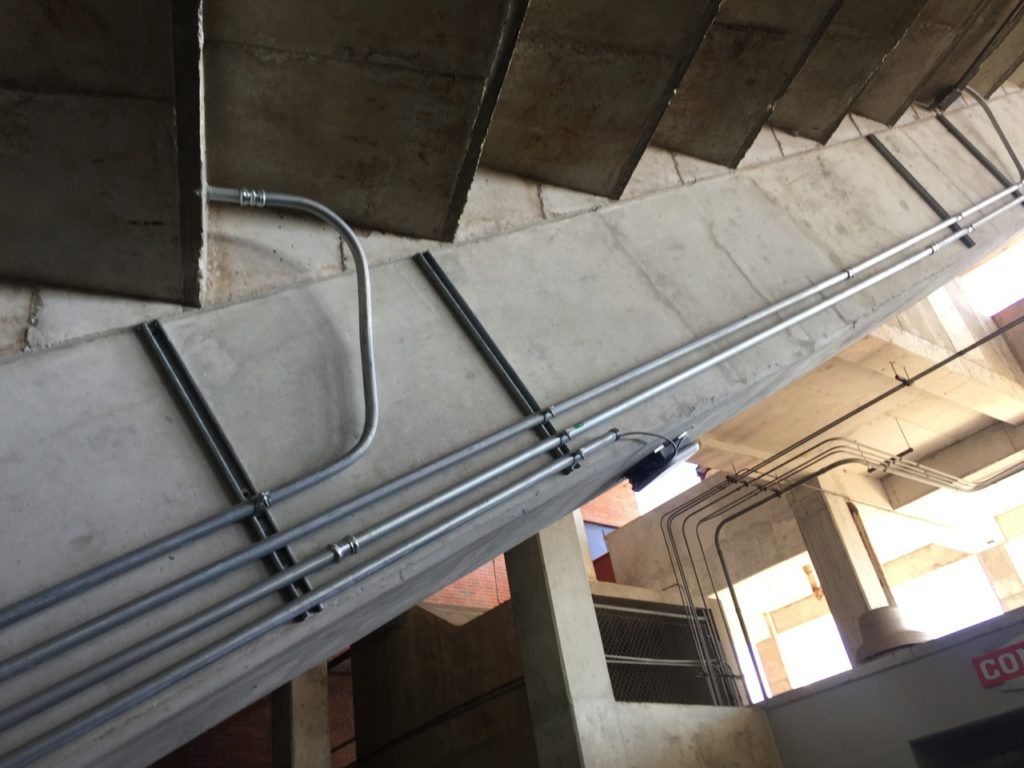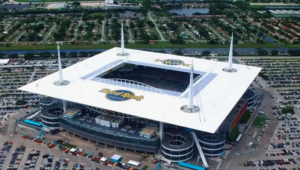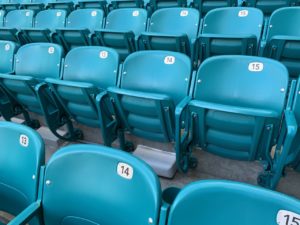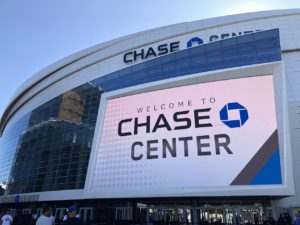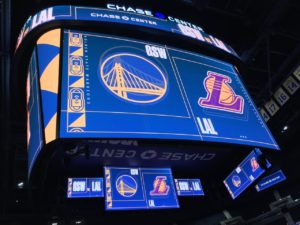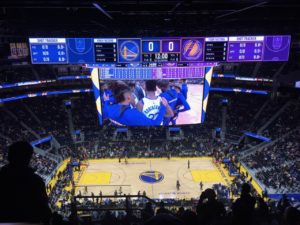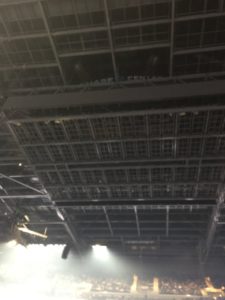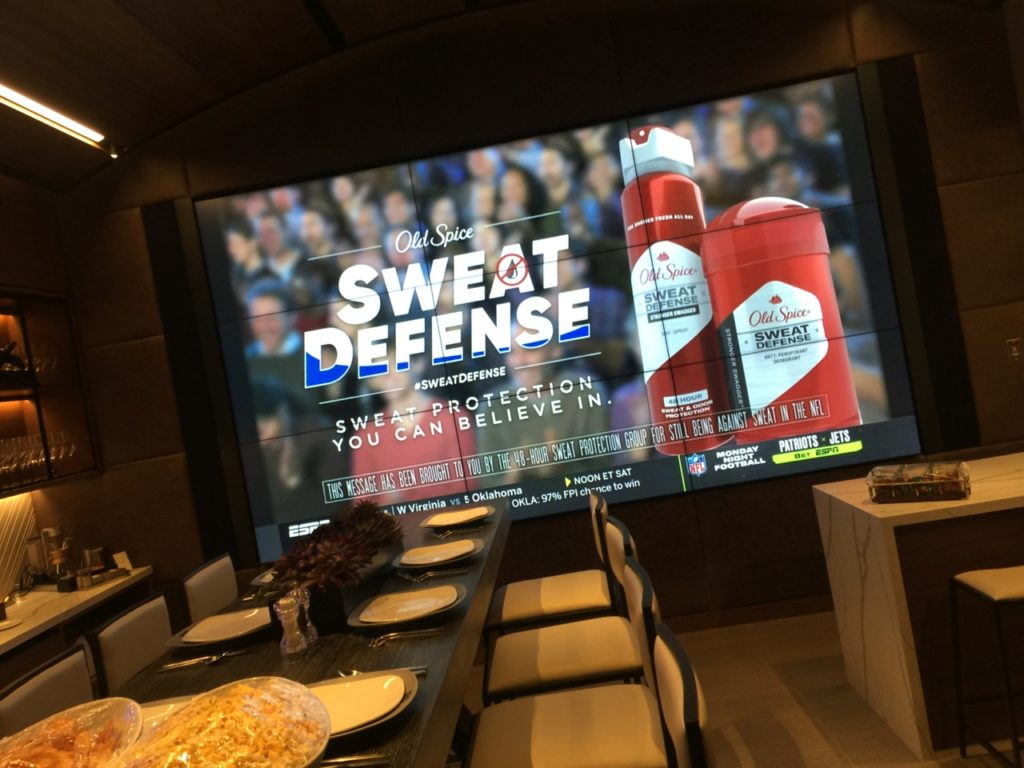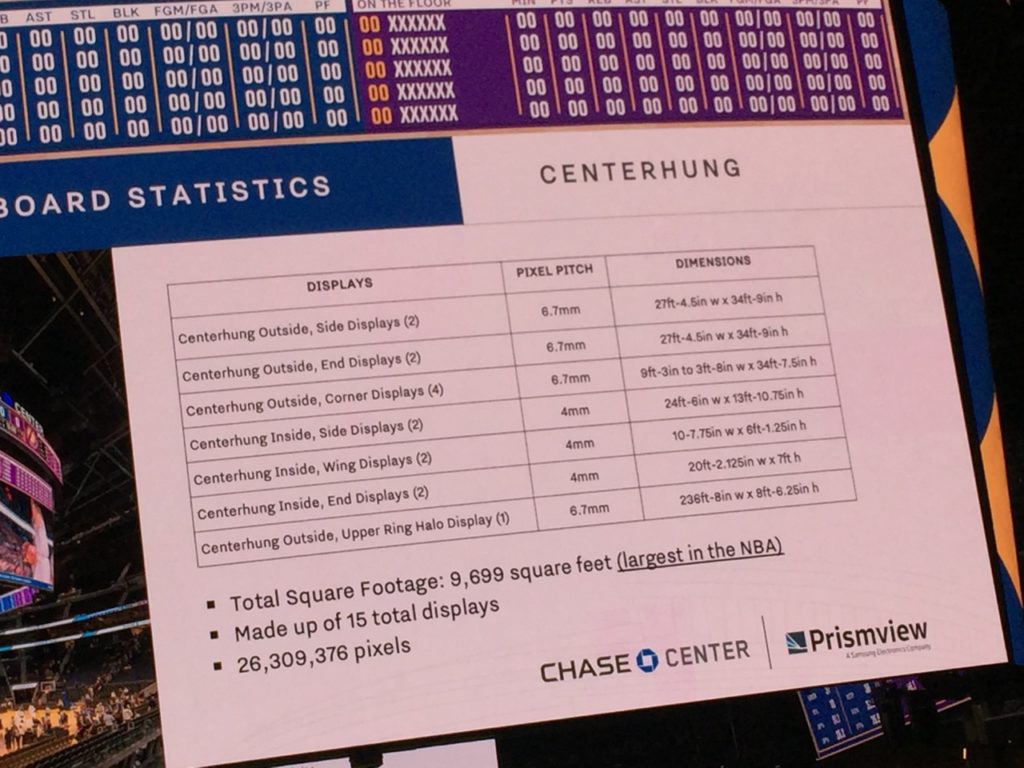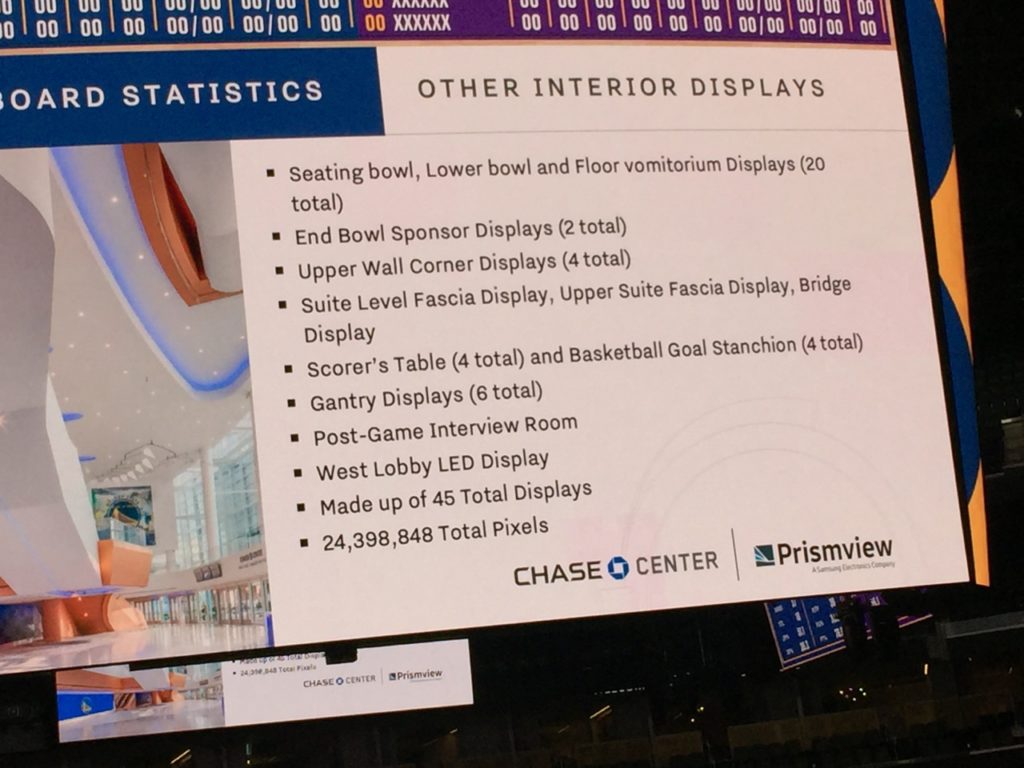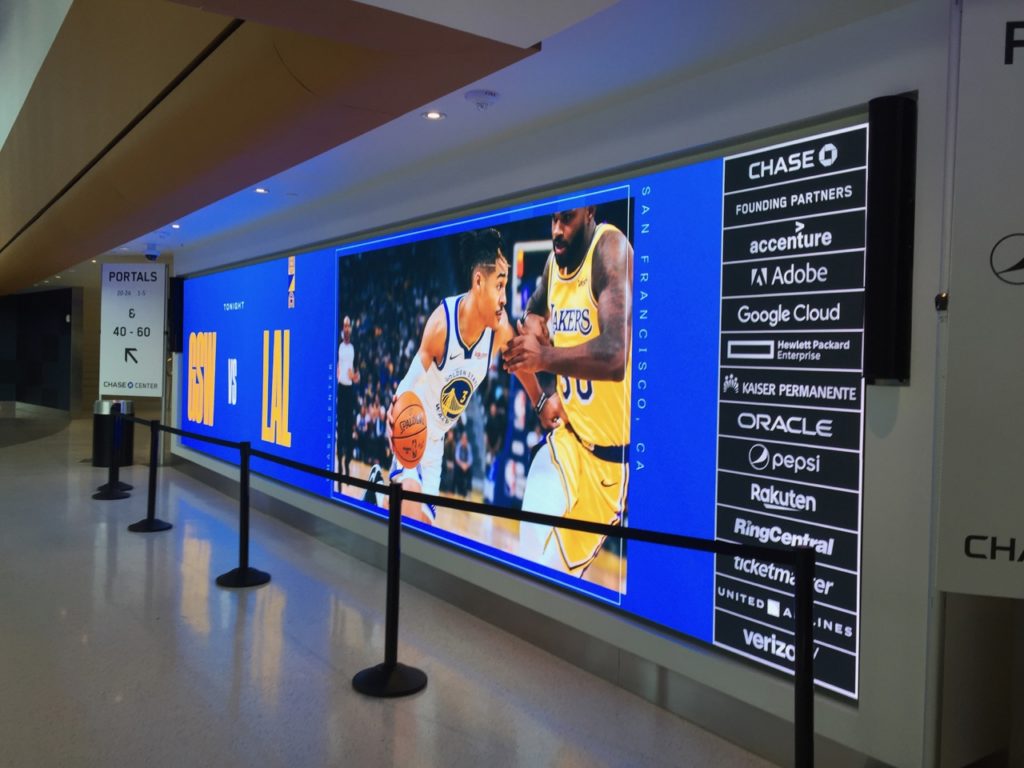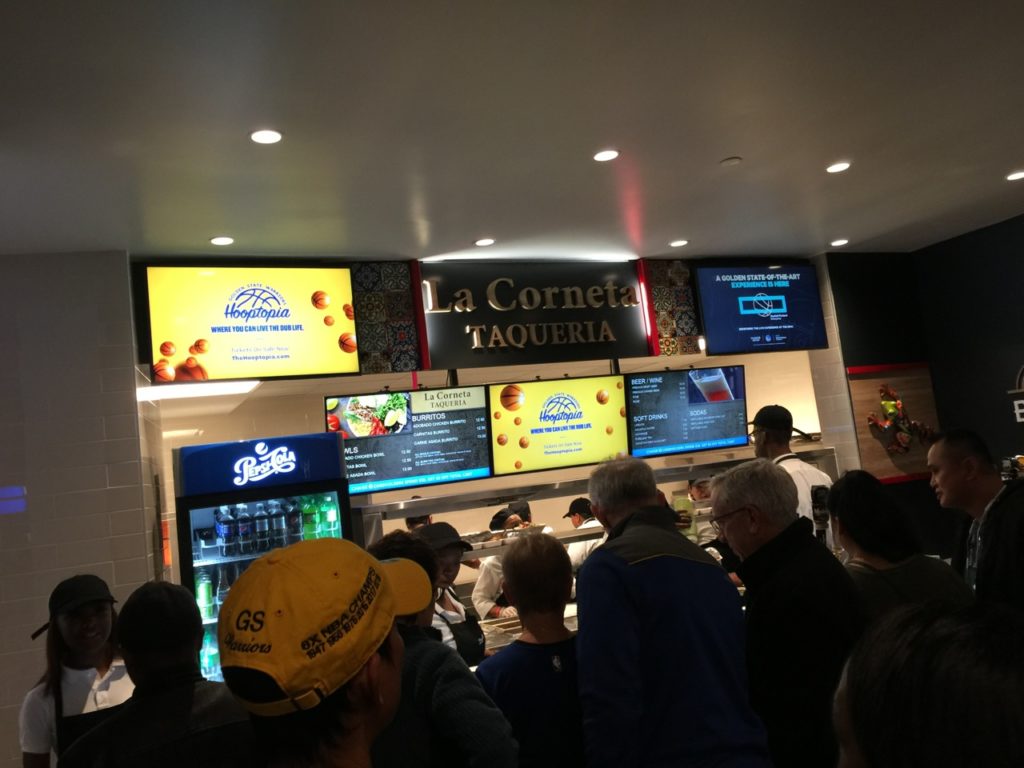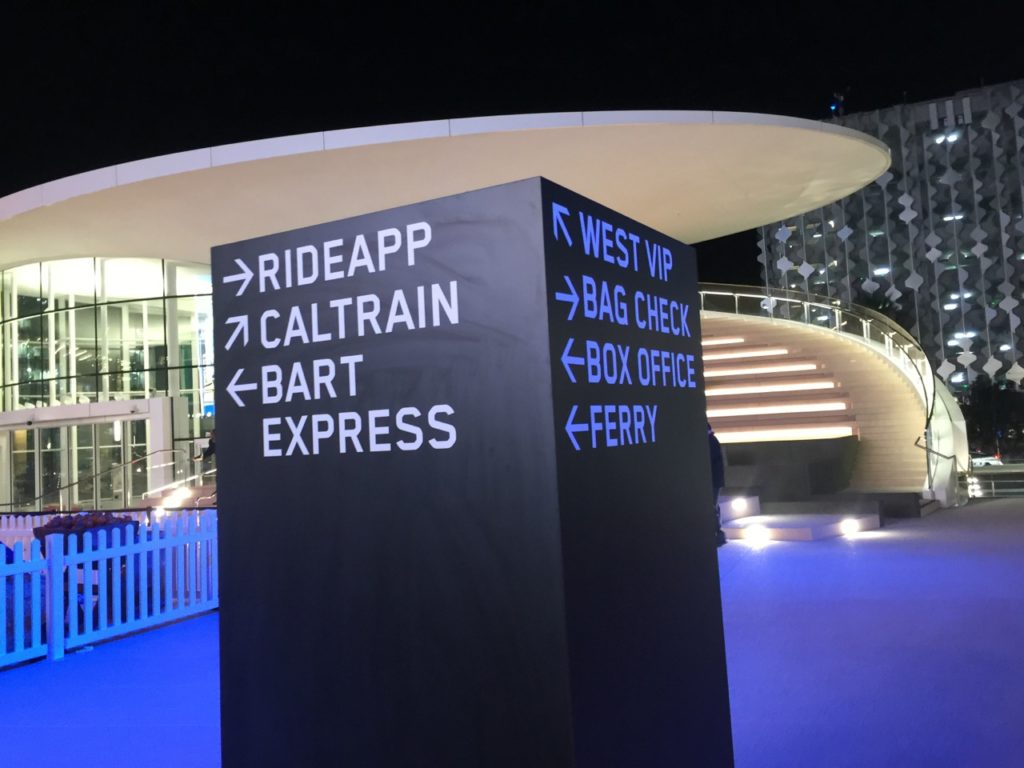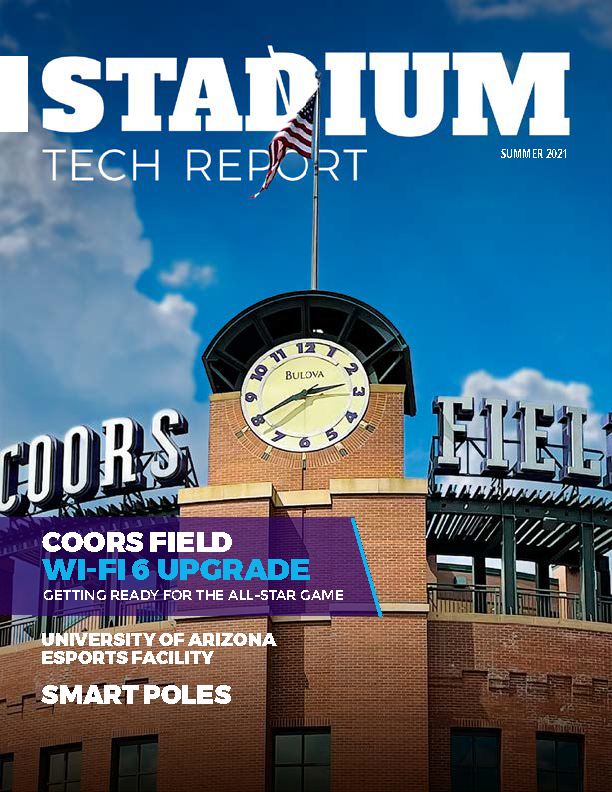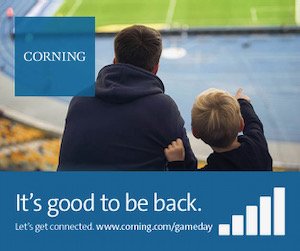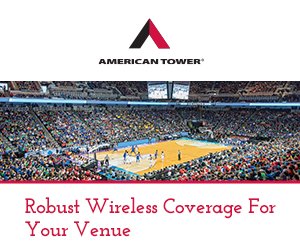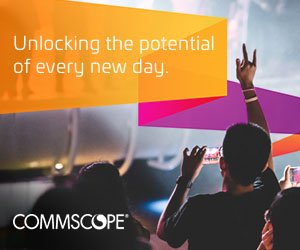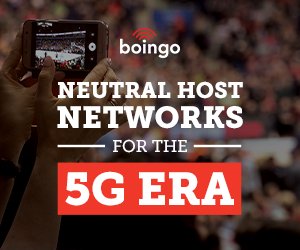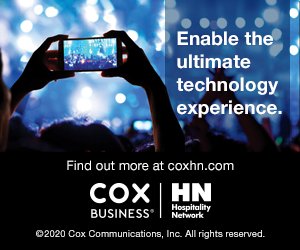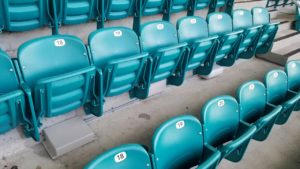
Under-seat Wi-Fi (left) and DAS (right) enclosures at Miami’s Hard Rock Stadium. Credit: Extreme Networks
What’s most interesting (to us) about the number is that it was generated in a venue that had approximately 8,000 fewer fans in attendance than last year’s Super Bowl (70,081 in Atlanta for Super Bowl 53 vs. 62,417 for Super Bowl 54). So not surprisingly the fans who connected to the Wi-Fi network at Miami’s Hard Rock Stadium (which uses Extreme gear) also set a new record for average data consumed per connected user, at 595.6 megabytes per user — a big jump from last year’s average data per user total of 492.3 MB.
With a reported 44,358 unique devices connected to the network this year’s Super Bowl also set a new mark for Super Bowl take rate at 71 percent; the top overall take rate mark still belongs to Ohio State, which saw 71.5 of its fans connected when Ohio Stadium saw 25.6 TB of Wi-Fi used this fall during a game against Michigan State. It’s worth noting that the average data per user mark from the Ohio State game was 341.6 MB. Going forward, we think this statistic is even more important than the overall data-used or total tonnage mark, since it more accurately reflects how the network is performing for fans. But we also like keeping a record of the biggest totals as well, since it does provide a high-water mark for stadium Wi-Fi usage.
Peak network usage hits 10 Gbps
Some more info from the great list put together by Extreme: The peak concurrent user number of 24,837 devices was seen during pre-game activities; the peak network throughput of 10.4 Gbps also occurred before the game started, according to Extreme. Of the final data total, 11.1 TB was used before the game started, with the balance of 15.32 TB being used after kickoff.
The most used streaming apps by fans were, in order of usage, Apple iTunes, Apple Streaming, YouTube, Spotify and Netflix; the most used social apps in order of usage were Facebook, Instagram, Twitter, Snapchat and Bitmoji. For sports apps, the most used in order of usage were ESPN, NFL, NFL OnePass, CBS Sports and ESPN Go.
According to Extreme, the Wi-Fi setup at Hard Rock Stadium uses some 2,000 APs, many of which are deployed in under-seat enclosures in the bowl seating. For Super Bowl LIV Verizon customers also had access to an automatic login feature, which in many other stadiums (including Ohio State and Mercedes-Benz Stadium in Atlanta) has accounted for a significant amount of the connected Wi-Fi users.
THE MSR TOP 40 FOR WI-FI
1. Super Bowl 54, Hard Rock Stadium, Miami, Fla., Feb. 2, 2020: Wi-Fi: 26.42 TB
2. Michigan State vs. Ohio State, Ohio Stadium, Columbus, Ohio, Oct. 5, 2019: Wi-Fi: 25.6 TB
3. Super Bowl 53, Mercedes-Benz Stadium, Atlanta, Ga., Feb. 3, 2019: Wi-Fi: 24.05 TB
4. Penn State vs. Ohio State, Ohio Stadium, Columbus, Ohio, Nov. 23, 2019: Wi-Fi: 20.7 TB
5. NCAA Men’s 2019 Final Four semifinals, U.S. Bank Stadium, Minneapolis, Minn., April 6, 2019: Wi-Fi: 17.8 TB
6. Wisconsin vs. Ohio State, Ohio Stadium, Columbus, Ohio, Oct. 25, 2019: Wi-Fi: 17.0 TB
7. Super Bowl 52, U.S. Bank Stadium, Minneapolis, Minn., Feb. 4, 2018: Wi-Fi: 16.31 TB
8. Maryland vs. Ohio State, Ohio Stadium, Columbus, Ohio, Nov. 9, 2019: Wi-Fi: 16.1 TB
9. Miami (Ohio) vs. Ohio State, Ohio Stadium, Columbus, Ohio, Sept. 21, 2019: Wi-Fi: 13.7 TB
10. NCAA Men’s 2019 Final Four championship, U.S. Bank Stadium, Minneapolis, Minn., April 8, 2019: Wi-Fi: 13.4 TB
11. Florida Atlantic vs. Ohio State, Ohio Stadium, Columbus, Ohio, Aug. 31, 2019: Wi-Fi: 13.3 TB
12. Cincinnati vs. Ohio State, Ohio Stadium, Columbus, Ohio, Sept. 7, 2019: Wi-Fi: 12.7 TB
13. Garth Brooks Stadium Tour, Empower Field at Mile High, Denver, Colo., June 8, 2019: Wi-Fi: 12.63 TB
14. 2018 College Football Playoff Championship, Alabama vs. Georgia, Mercedes-Benz Stadium, Atlanta, Ga., Jan. 8, 2018: Wi-Fi: 12.0 TB
15. Auburn vs. Florida, Ben Hill Griffin Stadium, Gainesville, Fla., Oct. 5, 2019: Wi-Fi: 11.82 TB
16. Super Bowl 51, NRG Stadium, Houston, Feb. 5, 2017: Wi-Fi: 11.8 TB
17. Pittsburgh Steelers vs. New England Patriots, Gillette Stadium, Foxborough, Mass., Sept. 8, 2019: Wi-Fi: 11.58 TB
18. Ohio State vs. Nebraska, Memorial Stadium, Lincoln, Neb., Sept 28, 2019: Wi-Fi: 11.2 TB
19. Atlanta Falcons vs. Philadelphia Eagles, Lincoln Financial Field, Philadelphia, Pa., Sept. 6, 2018: Wi-Fi: 10.86 TB
20. 2020 College Football Playoff Championship, LSU vs. Clemson, Mercedes-Benz Superdome, New Orleans, La., Jan. 13, 2020: Wi-Fi: 10.12 TB
21. Super Bowl 50, Levi’s Stadium, Santa Clara, Calif., Feb. 7, 2016: Wi-Fi: 10.1 TB
22. Taylor Swift Reputation Tour, Gillette Stadium, Foxborough, Mass., July 27, 2018: Wi-Fi: 9.76 TB
23. Northwestern vs. Nebraska, Memorial Stadium, Lincoln, Neb., Oct. 5, 2019: Wi-Fi: 9.2 TB
24. Tennessee Titans vs. Denver Broncos, Empower Field at Mile High, Denver, Colo., Oct. 13, 2019: Wi-Fi: 8.98 TB
25. Minnesota Vikings vs. Philadelphia Eagles, NFC Championship Game, Lincoln Financial Field, Philadelphia, Pa., Jan. 21, 2018: Wi-Fi: 8.76 TB
26. Jacksonville Jaguars vs. New England Patriots, AFC Championship Game, Gillette Stadium, Foxborough, Mass., Jan. 21, 2018: Wi-Fi: 8.53 TB
27. Northern Illinois vs. Nebraska, Memorial Stadium, Lincoln, Neb., Sept. 14, 2019: Wi-Fi: 8.5 TB
28. Rolling Stones No Filter Tour, Empower Field at Mile High, Denver, Colo., Aug. 10, 2019: Wi-Fi: 8.47 TB
29. South Alabama vs. Nebraska, Memorial Stadium, Lincoln, Neb., Aug. 31, 2019: Wi-Fi: 8.3 TB
30. Taylor Swift Reputation Tour, Broncos Stadium at Mile High, May 25, 2018: Wi-Fi: 8.1 TB
31. Chicago Bears vs. Denver Broncos, Empower Field at Mile High, Denver, Colo., Sept. 15, 2019: Wi-Fi: 8.09 TB
32. Kansas City Chiefs vs. New England Patriots, Gillette Stadium, Foxborough, Mass., Sept. 7, 2017: Wi-Fi: 8.08 TB
33. SEC Championship Game, Alabama vs. Georgia, Mercedes-Benz Stadium, Atlanta, Ga., Dec. 1, 2018: Wi-Fi: 8.06 TB
34. Green Bay Packers vs. Dallas Cowboys, Divisional Playoffs, AT&T Stadium, Arlington, Texas, Jan. 15, 2017: Wi-Fi: 7.25 TB
35. Stanford vs. Notre Dame, Notre Dame Stadium, South Bend, Ind., Sept. 29, 2018: 7.19 TB
36. (tie) Southern California vs. Notre Dame, Notre Dame Stadium, South Bend, Ind., Oct. 21, 2017: 7.0 TB
Arkansas State vs. Nebraska, Memorial Stadium, Lincoln, Neb., Sept 2, 2017: Wi-Fi: 7.0 TB
37. Tennessee vs. Florida, Ben Hill Griffin Stadium, Gainesville, Fla., Sept. 21, 2019: Wi-Fi: 6.94 TB
38. WrestleMania 32, AT&T Stadium, Arlington, Texas, April 3, 2016: Wi-Fi: 6.77 TB
39. Wisconsin vs. Nebraska, Memorial Stadium, Lincoln, Neb., Oct. 7, 2017: Wi-Fi: 6.3 TB
40. Super Bowl 49, University of Phoenix Stadium, Glendale, Ariz., Feb. 1, 2015: Wi-Fi: 6.23 TB
